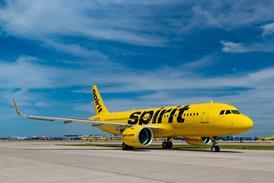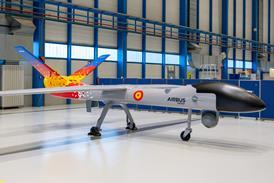As traditional markets struggle, Asia remains the area for revenue-led growth, writes Chris Tarry of CTAIRA, with analyses from Fabrice Tacoun
As the industry approaches the end of what, at least in aggregate, has been another financially damaging year, the focus appears to remain on problem areas.
When the final figures emerge in early 2006 it will be possible to see whether global industry losses are closer to $5 billion or $10 billion. But, as ever, reported results only tell us what has happened – more analytical depth is needed to offer any guide to future performance.
Moreover, against the background of the latest five-year traffic forecasts from IATA, it is important to be reminded that the outlook is not all doom and gloom. There is also a need to move away from what at a global level appears to be a continuing fixation with the serial loss-makers and underperformers.
This particularly applies to the USA. We have previously concluded that a resetting of the economics under bankruptcy protection will not necessarily result in sustainable profitability.
We have also suggested that a measure of success should be the ease of access that a carrier has to affordable/low-cost capital. Then it is perhaps more appropriate to focus on those regions where there is the potential for revenue-led growth from traffic driven by economic activity and rising household income.
While in relative terms, when measured by passenger traffic, Asia may be smaller than either the USA or Europe, it is the area where there is both momentum and potential. It is also a region where airline managements can still avoid the mistakes made elsewhere including the consequences of so-called “bandwagon” effects.
In particular, airline bosses need to recognise that models that may work in one part of the world may not be appropriate to another geographic region without often significant modification. The Asian industry is at a different state of maturity to that in other parts of the world and here lies the attraction, not only to the incumbent carriers, but also for investors and non-Asian airlines looking for growth.
Putting soaring fuel prices aside, which other than the notable exception of Southwest Airlines with its extensive hedging policy broadly affects all airlines, the focus should be on areas where there is structural or fundamental opportunity as in Asia, rather than bemoaning the fact that progress towards sustainable profitability in other parts of the world remains uncertain.
Non-Asian airlines, at least from an investor’s perspective, may still offer recovery and some growth potential. But in the long term, the reality is that margins and returns are likely to be structurally lower than they have been in the past and than in markets where there is structural opportunity and predominantly revenue-led profit growth.
IATA’s forecasts suggest that annual average growth of intra-Asian international traffic will be 6.8% a year. This is greater than the rate forecast for all international services of 5.6%.
The rate of growth forecast for Asia is also somewhat higher than the 5.3% forecast for the North Atlantic – which appears high given the signs of market maturity in this region. Inter-regional routes serving Asia are also forecast to exhibit above-average growth with traffic on services between Europe and Asia forecast to grow at an annual average rate of 5.9% and Middle East to Asia by 6.7%.
While we have argued many times that although traffic growth may be a necessary condition for economic success, on its own it is not sufficient. The relative rate of capacity growth is also a key factor in profitability – and in particular capacity growth within the region or system.
The most recent passenger numbers for the year-to-date for Asian airlines show international traffic rising by 6% and capacity rising by just over 5% resulting in a 0.6 percentage point increase in the load factor. The rate of capacity growth is likely to have a major bearing on the actual financial outcome over the next few years. This poses a major challenge in a market that is likely to become increasingly competitive.
While it is important to recognise what has – and equally importantly, what has not been achieved at a number of European and US airlines – it is just as vital to focus on the potential offered by the Asian market.
For non-Asian airlines the challenge is how they might tap into the potential that exists. But given the good access that most Asian airlines have to capital and the sometimes restrictive nature of their air service agreements, their managers may well be asking: why should they change anything?
Source: Airline Business























